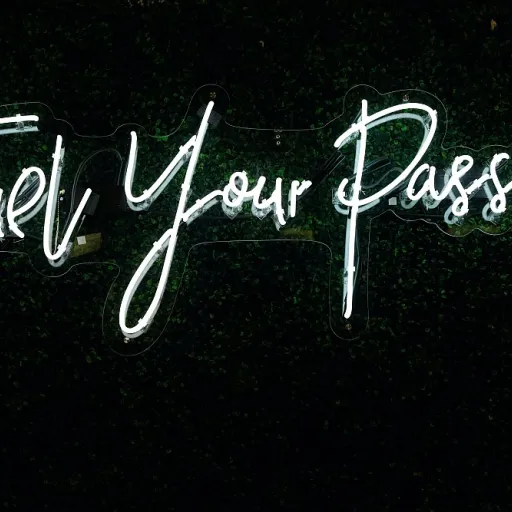
Understanding the skills gap in today’s workforce
Why the Skills Gap Matters for Today’s Workforce
The skills gap is a growing concern across industries, affecting both employers and job seekers. It refers to the disconnect between the skills employers need and the abilities that candidates actually possess. This gap is not limited to technical knowledge; it also includes soft skills, leadership, and tactical abilities. As technology evolves and workplace demands shift, traditional education and training programs sometimes struggle to keep up, leaving many professionals searching for ways to sharpen skills and remain competitive.
Key Drivers Behind the Skills Gap
- Rapid technological change: New tools, defense systems, and digital platforms require ongoing education and upskilling.
- Changing security and protection needs: With rising concerns about safety, there is increased demand for tactical training, situational awareness, and executive protection skills.
- Shortage of practical training courses: Many civilian courses and traditional education programs do not offer hands-on experience in areas like firearms training, pistol craft, or night vision tactics.
- Leadership and teamwork gaps: Employers are seeking individuals who can lead, adapt, and collaborate effectively in high-pressure environments.
How the Gap Impacts Civilians and Employers
For civilians, the skills gap can mean missed job opportunities or the need to enroll in specialized training courses to meet industry standards. For employers, it leads to longer hiring times and increased investment in on-the-job training. Courses tactical in nature, such as those offered by a training center or through a military civilian program, are designed to teach practical, in-demand skills that bridge these gaps.
Some organizations are turning to innovative solutions, like skills gap assessments, to better understand and address these challenges. These tools help identify specific areas where training, such as a civilian course in tactical training or firearms training, can make the most impact.
What’s Next in Addressing the Skills Gap
As the need for specialized skills grows, more civilians are exploring military-style training programs. These courses offer a blend of technical, tactical, and leadership education, preparing participants for roles in law enforcement, security, and executive protection. The following sections will explore what these training programs involve, the transferable skills gained, and real-world examples of how tactical training is helping to close the gap.
What military training for civilians involves
What Civilian Military Training Looks Like
Military training for civilians is not about preparing for combat, but about equipping individuals with practical, real-world skills that are often missing in traditional education or workplace training programs. These courses are designed to teach a blend of tactical, technical, and soft skills, drawing from proven military methods and adapting them for civilian needs. The focus is on building confidence, situational awareness, and the ability to respond effectively under pressure.
- Training courses: Civilian programs often include modules on firearms training, pistol craft, rifle handling, and tactical training. These are delivered in a controlled environment, emphasizing safety and responsibility.
- Situational awareness: Courses teach participants how to assess environments, identify threats, and make quick decisions. This is valuable not just for personal security, but also for executive protection and law enforcement roles.
- Defense and protection: Training centers offer civilian courses in self-defense, security tactics, and even night vision operations, helping individuals sharpen skills that are applicable in both personal and professional contexts.
- Technical and leadership skills: Many programs incorporate elements that build leadership, teamwork, and communication—skills that are highly sought after in today’s workforce.
These training programs are crafted to be accessible for civilians, regardless of prior experience. They range from introductory sessions to advanced tactical training, and often include specialized series such as concealed carry, privacy policy awareness, and executive protection. The goal is to bridge the gap between traditional civilian education and the practical demands of modern security and workplace environments.
For more details on how assessment tools can help bridge the skills gap in the workplace, you can read this in-depth guide on skills assessment.
Transferable skills gained from military-style training
Key Competencies Developed in Military-Style Training
Military training programs designed for civilians are not just about learning to handle a pistol or rifle. These courses are structured to develop a broad set of skills that are highly valued in today’s workforce. The focus is on practical, real-world abilities that can be transferred to a range of industries, from security and law enforcement to executive protection and even corporate leadership.
- Situational Awareness: Tactical training sharpens skills in observing environments, identifying threats, and making quick decisions. This heightened awareness is crucial for roles in security, defense, and any job requiring risk assessment.
- Leadership and Teamwork: Military civilian courses emphasize working as a unit, clear communication, and decisive leadership under pressure. These are essential for management roles and collaborative projects in civilian sectors.
- Technical Proficiency: Firearms training, including pistol craft and rifle handling, is only part of the story. Many programs include modules on night vision, tactical movement, and the use of technology in defense scenarios. These technical skills are increasingly relevant as industries adopt advanced security measures.
- Problem-Solving Under Stress: Training courses are designed to teach civilians how to remain calm and effective in high-pressure situations. This ability to think clearly and act decisively is valuable in emergency response, law enforcement, and executive protection.
- Ethical Decision-Making and Responsibility: Civilian courses often include education on privacy policy, legal considerations, and responsible use of force. Understanding these aspects is vital for anyone seeking roles in security or defense-related fields.
Many training centers offer a series of programs tailored to different needs, from introductory courses for beginners to advanced tactical training for those seeking to specialize. These courses are not just about physical skills; they are about building a mindset of discipline, adaptability, and continuous learning.
For those interested in bridging the gap between military and civilian skill sets, understanding the DoD 8570 certification requirements can provide further insight into how defense-related education aligns with industry standards.
Whether you are considering a civilian course to enhance your tactical abilities or looking to sharpen skills for a career in law enforcement, these training programs offer practical benefits that extend far beyond the shooting range. The details of each program will vary, but the core competencies remain consistent: readiness, responsibility, and resilience.
Addressing specific gaps: technical, soft, and leadership skills
Sharpening Technical Skills Through Tactical Training
Military-style training programs for civilians are designed to teach a range of technical skills that are often missing in the modern workforce. Courses such as firearms training, pistol craft, rifle handling, and night vision operations offer hands-on experience with advanced equipment and technology. These training courses are not just about defense or security—they also develop a practical understanding of tools and systems, which can be valuable in sectors like law enforcement, executive protection, and private security.
Building Soft Skills: Communication and Situational Awareness
Soft skills are increasingly recognized as essential for workplace success. Military civilian courses emphasize teamwork, clear communication, and situational awareness. Through tactical training and scenario-based exercises, participants learn to assess environments, make quick decisions, and coordinate with others under pressure. This kind of education helps bridge the gap between technical know-how and the ability to function effectively in dynamic, high-stress situations.
Leadership and Decision-Making Under Pressure
Leadership is a core component of military training, and civilian programs are crafted to instill these qualities. Whether in a training center or during field exercises, civilians are challenged to take initiative, manage resources, and lead teams. These experiences translate directly to civilian workplaces, where leadership, adaptability, and the ability to remain calm under pressure are in high demand. Courses tactical and training actors often simulate real-world scenarios, allowing participants to practice executive protection and crisis management skills.
- Technical skills: Firearms training, pistol craft, rifle handling, night vision, tactical defense
- Soft skills: Communication, teamwork, situational awareness, decision-making
- Leadership: Resource management, crisis response, executive protection, adaptability
By participating in a series of military-inspired civilian courses, individuals can address multiple skills gaps at once. These programs are designed to provide both the tactical and interpersonal skills that employers value, making them a practical option for those seeking to enhance their professional toolkit. For more details on course offerings, privacy policy, and program structure, comments and further information are often available directly from training providers.
Challenges and considerations for civilians entering military training
Barriers to Entry and Adaptation for Civilians
While military training programs for civilians are designed to teach valuable skills, there are several challenges and considerations that need attention before enrolling in a course or program. The transition from civilian education or workplace environments to a tactical training center can be demanding, both physically and mentally. Civilian courses often introduce concepts like situational awareness, executive protection, and firearms training, which may be unfamiliar or intimidating for those without prior exposure to defense or security fields.
Physical and Mental Demands
Military-style training courses, whether focused on pistol craft, rifle tactics, or night vision operations, require a certain level of physical fitness and mental resilience. Civilians may find the intensity of tactical training and the discipline expected in these environments to be a significant adjustment. Training actors and instructors often emphasize teamwork, quick decision-making, and adaptability—skills that are not always part of traditional civilian education or workplace training.
Legal and Ethical Considerations
Another important aspect is understanding the legal framework around firearms training, concealed carry, and privacy policy requirements. Civilian participants must be aware of local laws and regulations regarding the use of firearms, executive protection, and security protocols. Many training centers provide detailed briefings and require strict adherence to safety and privacy standards, but it remains the responsibility of each participant to ensure compliance.
Cost, Accessibility, and Course Selection
Access to quality training courses can also be a challenge. Not all regions have established training centers offering a full series of tactical training or defense courses. Additionally, the cost of enrolling in specialized programs—such as those focusing on pistol, rifle, or night vision skills—can be a barrier for some civilians. It is important to review course details, instructor credentials, and the specific skills each program is designed to teach before making a commitment.
- Assess your current skill level and physical readiness before enrolling
- Research course content, including tactical and security modules
- Understand the legal implications of firearms and executive protection training
- Consider the reputation and expertise of the training center or instructors
- Read comments and reviews from previous civilian course participants
Ultimately, while military training for civilians can help sharpen skills and address the workforce skills gap, careful consideration of these challenges will help ensure a positive and productive experience. Choosing the right training tactical program and understanding the expectations can make a significant difference in the outcomes for civilian learners.
Real-world applications and success stories
From Training Centers to Real-World Impact
Across industries, the influence of military-style training for civilians is becoming more visible. Training centers now offer a series of civilian courses designed to teach tactical skills, situational awareness, and executive protection. These programs are not just about firearms training or learning to handle a pistol or rifle. They focus on a blend of technical skills, soft skills, and leadership—addressing the same gaps identified in the workforce. Many participants in these training courses report sharper skills in decision-making and problem-solving under pressure. For example, tactical training often includes scenarios that require quick thinking, teamwork, and clear communication. These are the same abilities valued in law enforcement, security, and even corporate environments where crisis management is crucial.- Security professionals use tactical training to improve their response to threats and enhance protection strategies.
- Education and training actors in the private sector adopt military civilian course models to boost leadership and resilience among staff.
- Night vision and situational awareness modules help civilians and executives operate effectively in low-visibility or high-stress situations.












